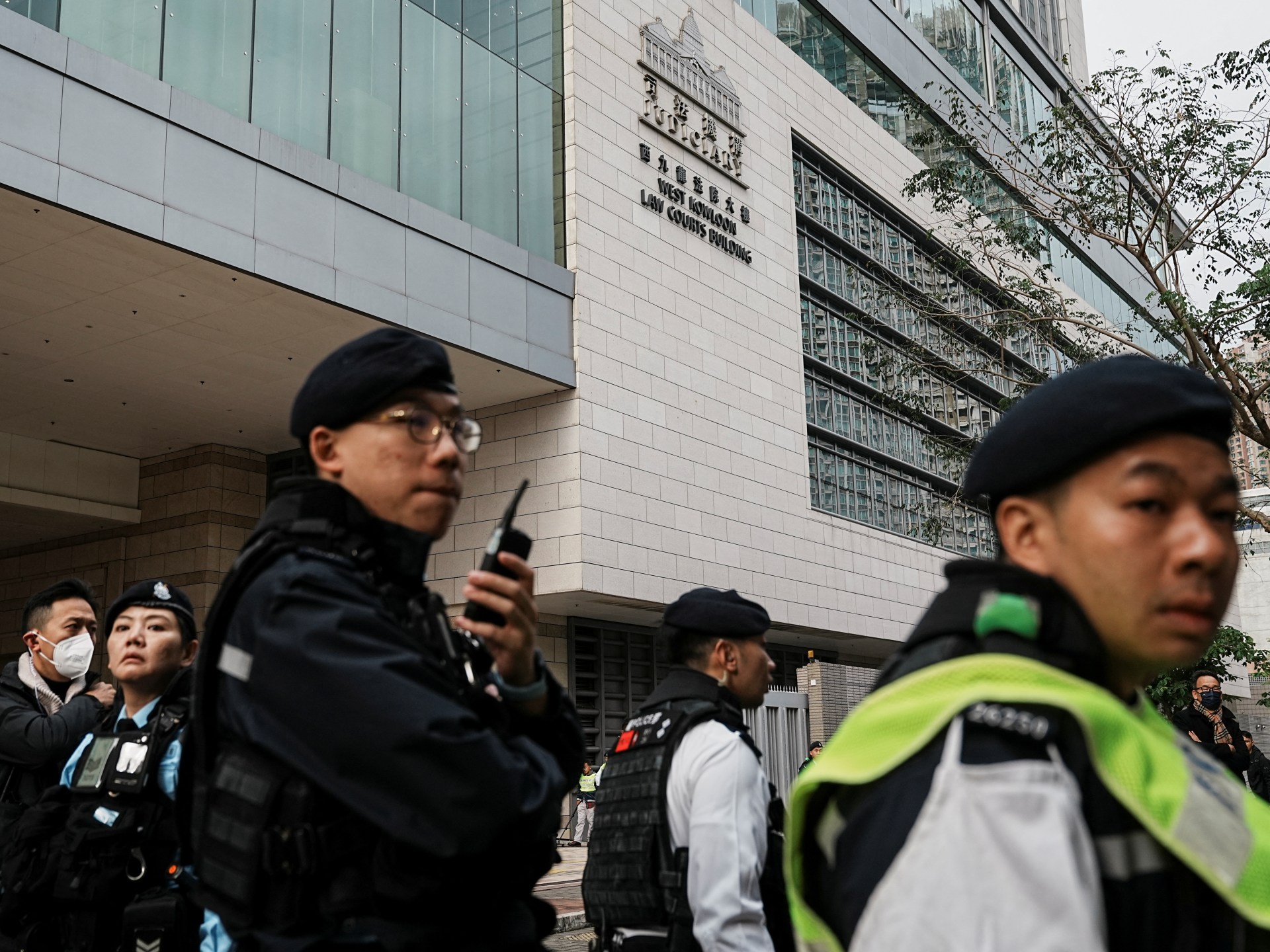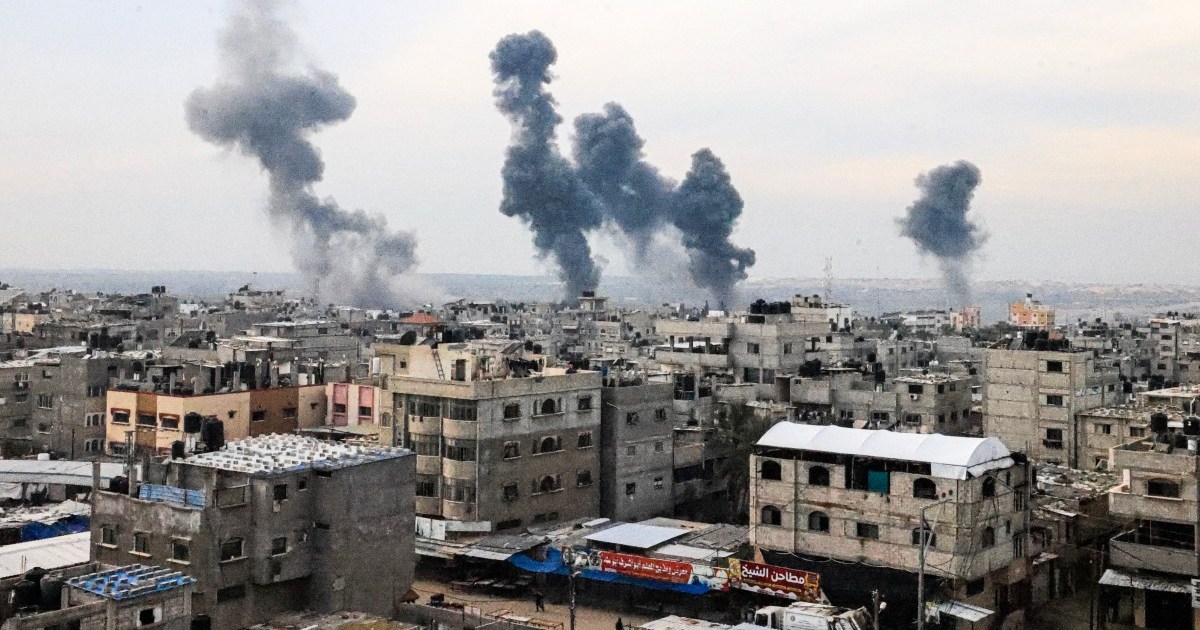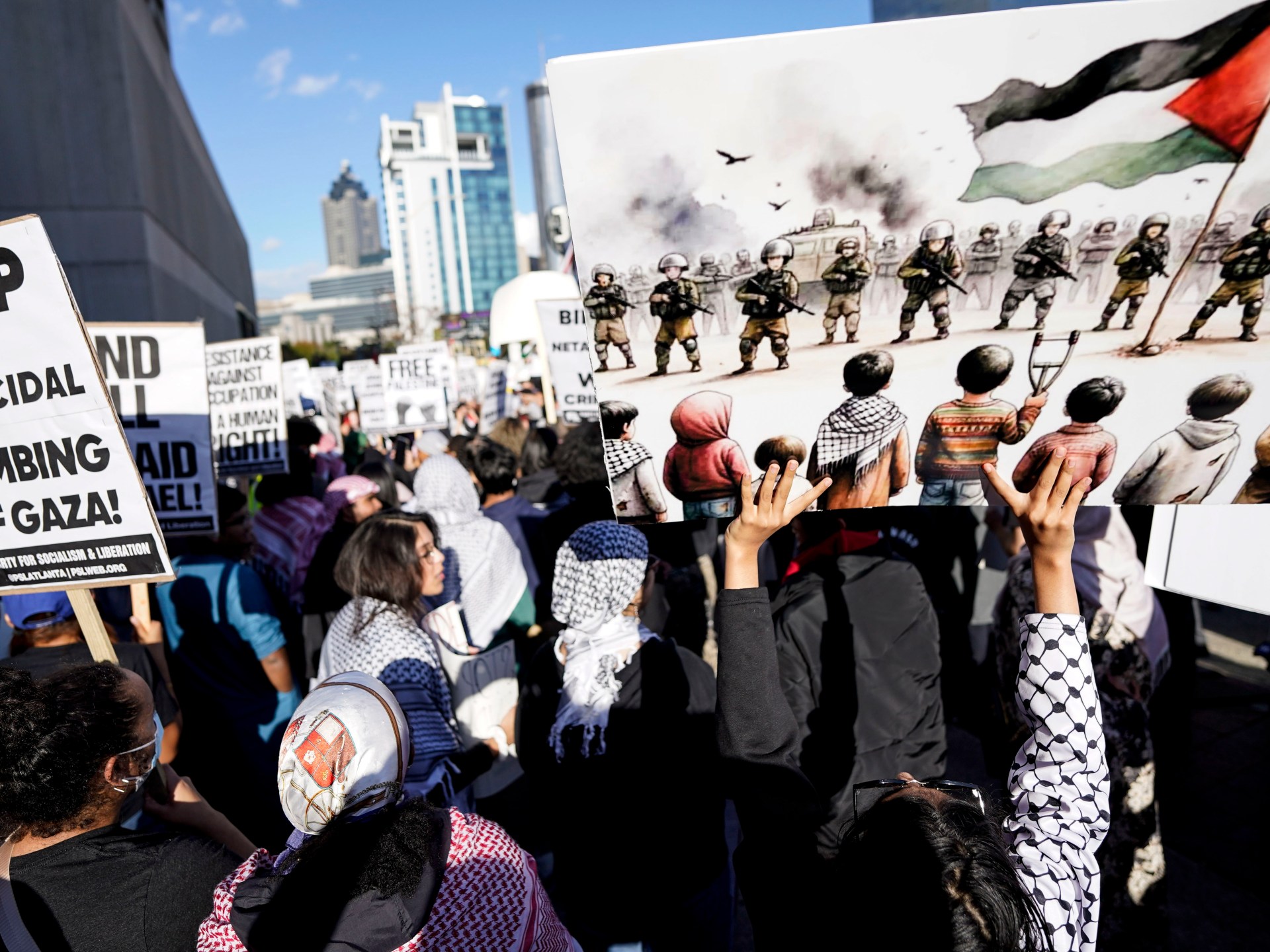
WASHINGTON (AP) — The U.S. military launched an airstrike Friday on dozens of sites in Iraq and Syria used by Iran-backed militias and the Iranian Revolutionary Guard. This was the first retaliatory salvo for the drone strike that killed three US soldiers in Jordan last weekend.
The massive strikes hit more than 85 targets at seven locations, including command and control centers, intelligence centers, missiles and missiles, drone and ammunition depots, and other facilities linked to the militias or the IRGC’s Quds Force, the Guard’s Expeditionary Force stood unit that takes care of Tehran’s relations with regional militias and their armament. And President Joe Biden made clear in a statement that there will be more.
The U.S. strikes did not appear to be directly aimed at Iran or senior leaders of the Revolutionary Guard’s Quds Force within its borders, as the U.S. seeks to prevent further escalation of the conflict. Iran has denied being behind the attack in Jordan.
It was unclear what impact the strikes would have. Days of US warnings may have caused militia members to disperse and go into hiding. With multiple groups operating at different locations in multiple countries, a knockout is unlikely.
Although one of the main Iranian-backed militias, Kataib Hezbollah, said it would stop attacks on American troops, others have vowed to continue the fight and portray themselves as champions of the Palestinian cause, while the war in Gaza shows no signs of ending shows.
“Our response began today. “It will continue at a time and place of our choosing,” Biden warned, adding: “Let anyone who might seek to harm us know this: If you harm an American, we will respond.” He and others Senior U.S. leaders had said for days that any American response would not be a single strike but a “graded response” over time.
John Kirby, spokesman for the National Security Council, said the targets were “carefully selected to avoid civilian casualties and were based on clear, irrefutable evidence that they were linked to attacks on U.S. personnel in the region.” He declined to elaborate on the evidence.
The attacks lasted about 30 minutes and three of the sites attacked were in Iraq and four in Syria, said Lt. Gen. Douglas Sims, director of the Joint Staff.
According to US Central Command, the attack involved more than 125 precision munitions fired from numerous aircraft, including long-range B-1 bombers flown by the US. Sims said the weather was a factor when the U.S. planned the attacks, allowing the U.S. to confirm it hit the right targets and avoided civilian casualties.
However, it is unclear whether militia members were killed.
“We know that there are militants using these locations, both the IRGC and personnel from an Iran-allied militia group,” Sims said. “We conducted these attacks tonight with the understanding that there would likely be casualties associated with people in these facilities.”
Syrian state media reported casualties but did not give a number. The Britain-based Syrian Observatory for Human Rights reported that 18 militants were killed in the attacks in Syria.
Iraqi army spokesman Yahya Rasool said in a statement that the city of al-Qaim and areas along the country’s border with Syria had been hit by US airstrikes. The attacks, he said, “represent a violation of Iraqi sovereignty and undermine the efforts of the Iraqi government and pose a threat that will lead to undesirable consequences for Iraq and the region.”
Kirby said the U.S. alerted the Iraqi government before carrying out the attacks.
The attack came just hours after Biden and senior defense leaders joined grieving families to watch as the remains of the three Army Reserve soldiers at Dover Air Force Base in Delaware were returned to the United States.
Just on Friday morning, hardline Iranian President Ebrahim Raisi reiterated Tehran’s earlier promises to potentially retaliate against US attacks against its interests. We “will not start a war, but if a country, if a cruel power wants to bully us, the Islamic Republic of Iran will give a strong response,” Raisi said.
In a statement this week, Kataib Hezbollah announced “the suspension of military and security operations against the occupying forces to prevent an embarrassment to the Iraqi government.” But this claim apparently had no impact on US strike plans. Harakat al-Nujaba, one of the other major Iran-backed groups, vowed on Friday to continue military operations against US troops.
The U.S. has blamed the Islamic Resistance in Iraq, a broad coalition of Iranian-backed militias, for the attack in Jordan but has not narrowed it down to a specific group. However, Kataib Hezbollah is one of the main suspects.
Some of the militias have posed a threat to U.S. bases for years, but the groups stepped up their attacks following Israel’s war with Hamas following the Oct. 7 attack on Israel that killed 1,200 people and took 250 others hostage. The war has led to the deaths of more than 27,000 Palestinians in Gaza and thrown the Middle East into turmoil.
Iran-backed militia groups across the region have used the conflict to justify attacks on Israeli or U.S. interests, including by threatening civilian merchant vessels and U.S. warships in the Red Sea region with drones or missiles in almost daily clashes .
Defense Secretary Lloyd Austin told reporters on Thursday: “This is a dangerous moment in the Middle East.” He said the US would take all necessary measures to defend its interests and its people and warned: “At this point it is on the time to take away even more capabilities than we have taken away in the past.”
As of Tuesday, Iran-backed militia groups had carried out 166 attacks on U.S. military facilities since Oct. 18, including 67 in Iraq, 98 in Syria and now one in Jordan, according to a U.S. military official. The most recent attack occurred on January 29 at al-Asad air base in Iraq and there were no injuries or property damage.
Meanwhile, the U.S. has bolstered defenses at Tower 22, the base in Jordan that was attacked by Iran-backed militants on Sunday, according to a U.S. official. While previous U.S. responses in Iraq and Syria were more limited, the deaths of the three service members in Jordan crossed a line, the official said.
That attack, which also injured more than 40 military personnel – mostly Army National Guardsmen – was the first since the start of the war between Israel and Hamas, which left the Iranian-backed militias dead in the United States. Tower 22 houses about 350 US troops and is located near the demilitarized zone on the border between Jordan and Syria. The Iraqi border is only 10 kilometers away.
Also on Friday, the Israeli military said its Arrow defense system intercepted a missile approaching the country from the Red Sea, raising suspicions that it was fired by Yemen’s Houthi rebels. The rebels did not immediately claim responsibility.
And a U.S. official said the military launched additional self-defense attacks in Yemen on Friday against Houthi military targets considered an imminent threat. Al-Masirah, a Houthi-run satellite news channel, said British and American forces carried out three attacks in northern Yemen’s Hajjah province, a Houthi stronghold.
—-
Aamer Mahdani and Fatima Hussein reported from Washington, DC. Abdulrahman Zeyad and Qassim Abdul-Zahra reported from Baghdad, Jon Gambrell reported from Jerusalem, and Ahmed al-Haj reported from Yemen.






Recent Comments